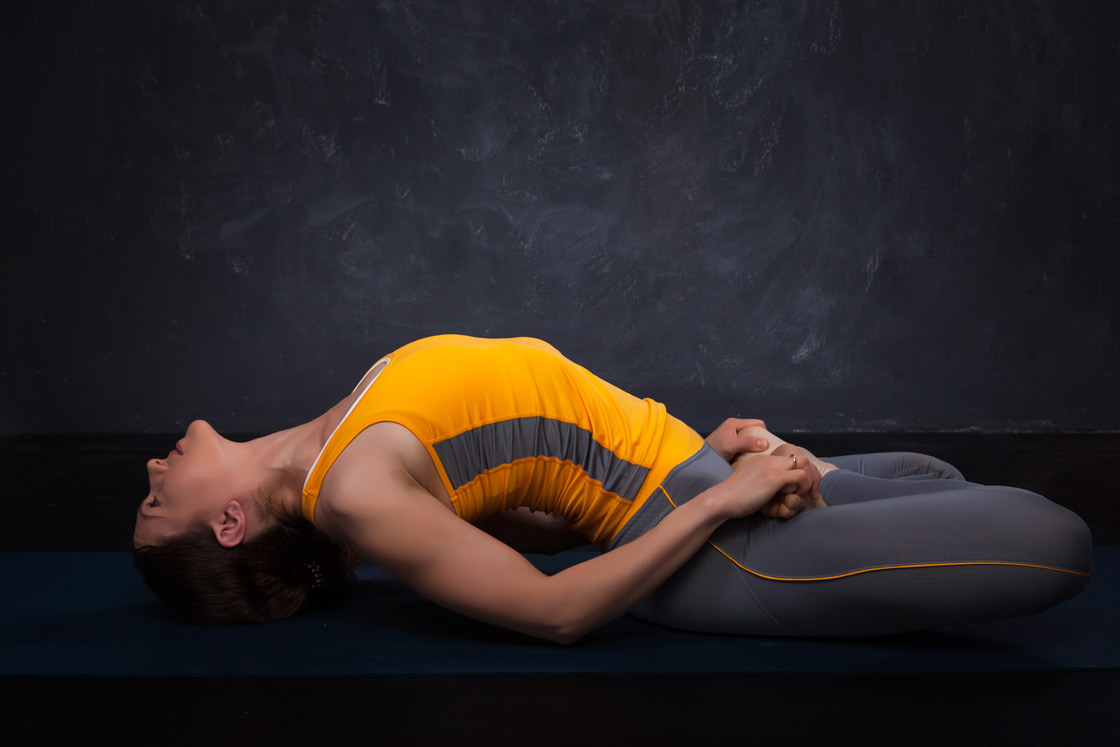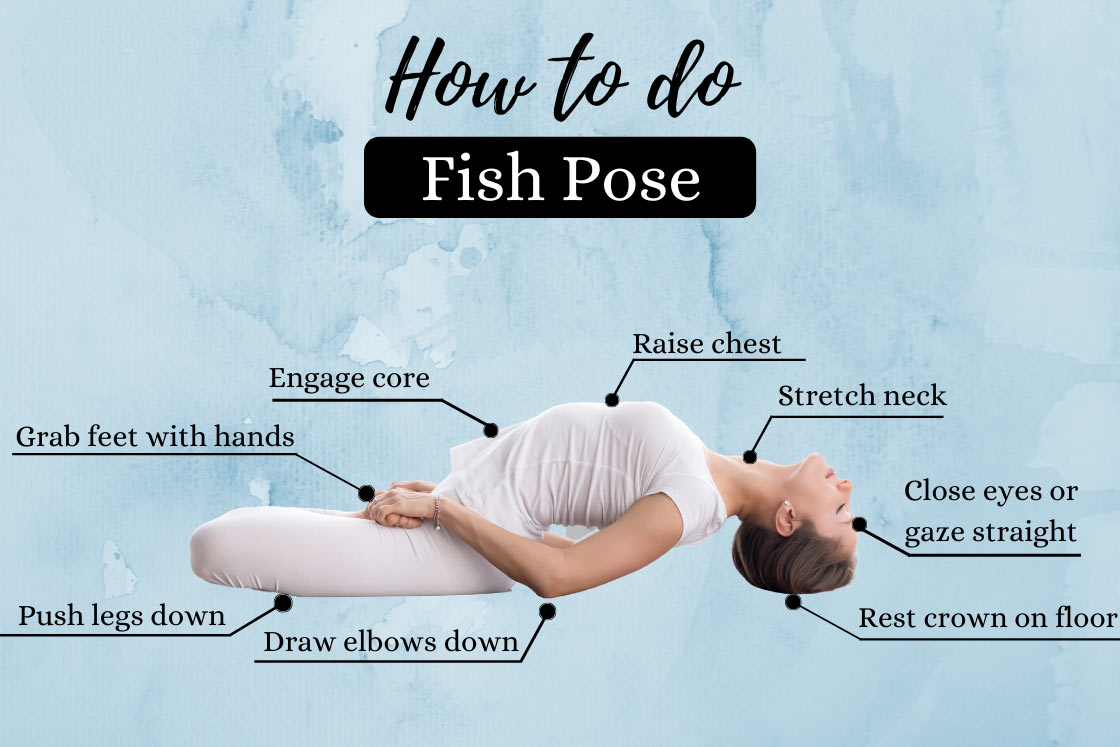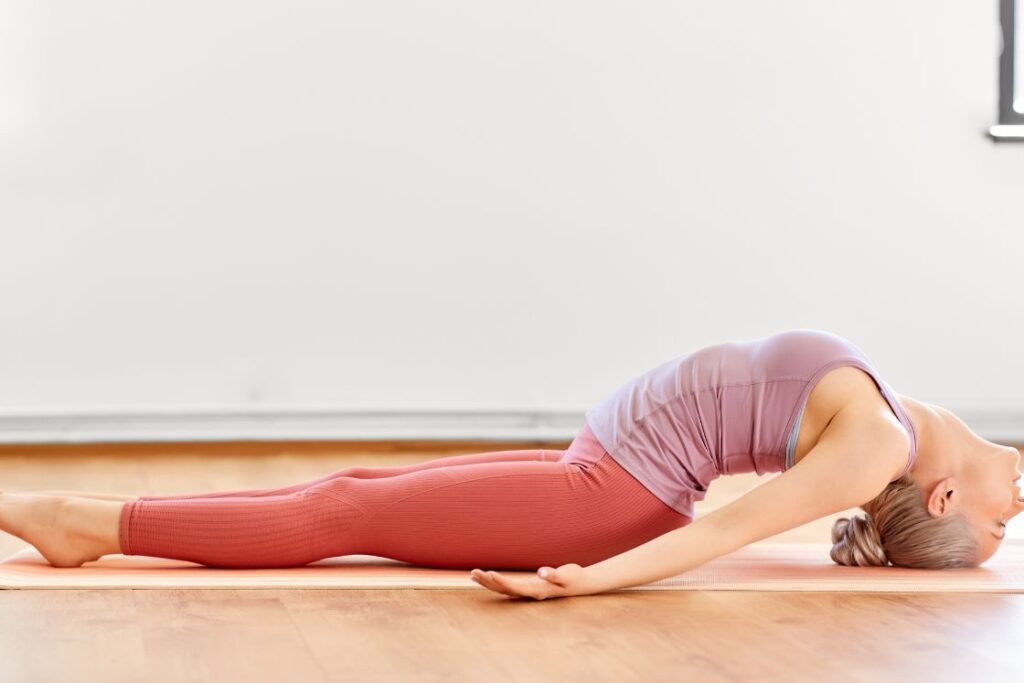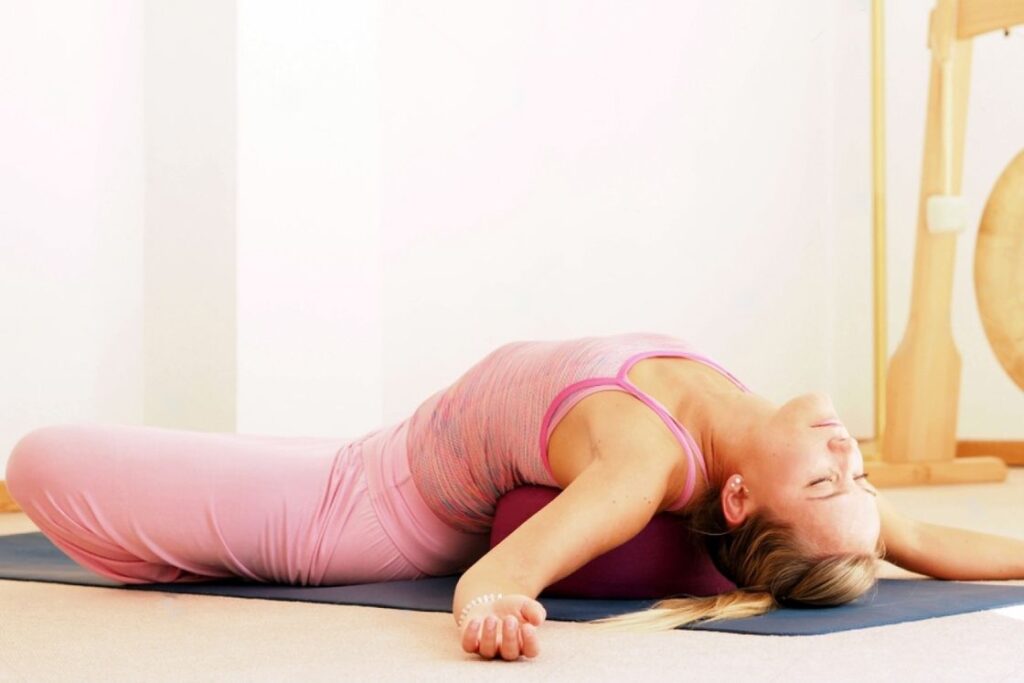Fish Pose (Matsyasana): How to Do, Benefits, Precautions and Variations
Fish Pose, known in Sanskrit as Matsyasana, is a classic yoga asana that embodies grace and balance. This pose is considered heart-opening and acts as a catalyst for the activation and balance of the heart chakra, known as the...

 Image Source: Shutterstock
Image Source: ShutterstockFish Pose, known in Sanskrit as Matsyasana, is a classic yoga asana that embodies grace and balance. This pose is considered heart-opening and acts as a catalyst for the activation and balance of the heart chakra, known as the “anahata” in yoga philosophy. By opening the heart chakra, Matsyasana invites a deep sense of compassion, love and acceptance, both for oneself and for others.
Fish Pose is highly effective for strengthening the lower and middle back, toning the core (abs), loosening the hips, soothing the neck, and rejuvenating the shoulders. Its practice provides both strength and relief, lightening the daily burdens of life.
Origin and Philosophy
Matsyasana was first described in the ancient Yoga text, GherandaSamhita, in the 17th century that states its medieval presence.
In addition, well-known yoga masters such as Swami Satyanand Saraswati and BKS Iyengar have incorporated Matsyasana into their sequences. In Hatha Yoga, Matsyasana occupies the prestigious place of the fifth of the twelve basic postures.
The name “Fish pose” or “Matasyasana” derives from the idea that when doing this asana in water, one can have the sensation of floating like a fish. This connection with water adds a unique dimension to the name of the posture.
BKS Iyengar also shares the spiritual aspect of Matsyasana, dedicating it to the fish incarnation of Lord Vishnu. According to mythology, this incarnation played a crucial role in saving Manu and the seven great sages (Saptrishi) along with all the Vedas from an impending universal flood, thereby preserving the world’s wisdom. Matsyasana symbolizes this remarkable act of rescue and wisdom preservation
How to Do Fish Pose(Matsyasana)
 Image Source: Shutterstock
Image Source: ShutterstockModification
If you are having trouble in keeping your legs in Padmasana (Lotus Pose), you can try it with straight legs. Here you have to keep your legs stretched & straight and place your forearms on the floor. Rest of the position of the body remain same as above.

Beginner’s Tips
In the beginning, you might find the above pose a little challenging to achieve. Therefore, you can start by lying flat on your back and stretching your arms over your head. If you are having difficulty touching the crown of your head to the floor, you can place a yoga block under your head. Alternatively, if you feel comfortable with your head hanging, you can leave it in that position. Placing a rolled blanket under your back is a good option as it provides support to your back. Feel free to ask a friend or yoga instructor for help in achieving this pose correctly.Precautions and Contraindications
Do not put too much weight on the crown of your head; rest it gently on the floor. Do not overstretch your body; stretch your body only as far as it allows. Perform Fish Pose only on an empty stomach or at least 4 hours after having a meal. Do not strain your neck; keep it within the arch formed by the spine. Avoid this asana if you have Spondylitis (inflammation of the vertebra), as this asana puts pressure on your neck and spine, which can be harmful in such a condition. If you have blood pressure problems, migraines, or heart issues, consult your doctor before performing Matsyasana. It is better to avoid this asana in such conditions. Strictly avoid this asana if you have a deep or recent injury to the neck, elbows, core, or spine. As this asana puts pressure on the abdomen area, it is not recommended for pregnant women.Fish Pose(Matsyasana) Variations
Fish Pose, or Matsyasana, offers several variations that cater to practitioners with different levels of experience and flexibility. These variations allow individuals to adapt the pose to their needs and gradually progress in their practice. Here are some notable Fish Pose variations:
Ardha Matsyendrasana (Half Lord Fishes Pose): This variation is suitable for beginners or those with limited flexibility. Instead of lifting the chest entirely off the floor, only one side of the chest is lifted while the opposite shoulder remains grounded. This reduces the intensity of the backbend and is an excellent way to build flexibility gradually. Image Source: CanvaSupported Fish Pose: To practice this variation, you would place a yoga block or a cushion under your upper back as you perform Fish Pose. This provides additional support and allows for a more relaxed and restorative experience.
Image Source: CanvaSupported Fish Pose: To practice this variation, you would place a yoga block or a cushion under your upper back as you perform Fish Pose. This provides additional support and allows for a more relaxed and restorative experience.
 Image Source: Shutterstock
Image Source: ShutterstockBenefits of Fish Pose(Matsyasana)
Enhanced Upper Body FlexibilityRegular practice of Fish pose enhances the flexibility of the upper body, promoting a wide range of motion. This pose effectively stretches the muscles of the chest, neck, and shoulders, providing relief from stiffness and tension. It is particularly beneficial for individuals who experience tightness in the upper body due to sedentary lifestyles or poor posture.
2. Strengthened Hips and Spine
Fish pose aids in the strengthening and improved mobility of the hips and spine. By arching the back and lifting the chest, it engages the muscles around these areas, enhancing stability and flexibility. This is especially valuable for those seeking to alleviate discomfort or pain in the lower back and hip region.
3. Improved Blood Flow to the Head
The asana encourages a proper flow of blood to the head and brain, which nourishes the pituitary and pineal glands. This not only enhances brain function but also helps reduce stress, anxiety, and depression. The increased blood circulation to the head provides a sense of mental clarity and relaxation.
4. Neck and Shoulder Toning
Fish pose effectively tones the muscles and bones of the neck and shoulders. It opens up these muscle groups and enhances their alignment. Additionally, it is beneficial for individuals with rounded shoulders, aiding in correcting posture and reducing the risk of related issues.
5. Chest Opener and Improved Lung Capacity
Fish Pose is a fantastic chest opener exercise. It expands the chest and increases lung capacity, facilitating proper breathing and prana (life force) flow. This promotes respiratory health, making it an excellent choice for individuals looking to enhance their lung function.
6. Regulation of Metabolism and Calcium Levels
The gentle neck stretch and massage of the thyroid and parathyroid glands that occurs during Matsyasana have positive effects on metabolism and calcium regulation. This asana helps maintain the body’s metabolic processes and calcium balance, contributing to overall health.
7. Soothing Digestive System
The asana’s gentle stretch in the abdominal region massages various abdominal organs, including the liver, kidneys, and intestines. This aids in soothing the digestive system, providing relief from issues like constipation, indigestion, and related digestive discomfort.
8. Relief from Menstrual Pain
Matsyasana offers a gentle stretch to the hip flexors, pelvis, and lower and middle back. Besides promoting a healthy and flexible spine, it is particularly useful for women as it can alleviate menstrual pain and discomfort.
9. Stimulation of Heart and Throat Chakras
Matsyasana stimulates the Heart Chakra (Anahata) and Throat Chakra (Visuddha). This stimulation enhances self-expression, self-belief, and emotional growth. It is an excellent choice for those looking to work on their heart and throat energy centers for emotional and spiritual development.
Fish Pose/Matsyasana FAQs
How long should I hold Fish Pose(Matsyasana)?
Hold Fish Pose for 30 to 60 seconds while taking deep breaths. Gradually increase the duration as your flexibility improves.
Is Fish Pose(Matsyasana) suitable for beginners?
Yes, Fish Pose can be practiced by beginners. It’s important to start slowly, use props if needed, and work within your flexibility limits.
Can Fish Pose help improve posture?
Yes, Fish Pose can help improve posture by stretching the chest and shoulders. It counteracts the rounding of the shoulders associated with poor posture.
What precautions should I take with Fish Pose?
Avoid straining your neck, putting too much weight on your head, or practicing it with specific medical conditions, such as spondylitis, high blood pressure, or recent neck or spine injuries.
Is it necessary to cross the legs in Fish Pose?
Crossing the legs in a lotus position is optional. You can keep your legs straight if you find it more comfortable.
Can Fish Pose relieve menstrual pain?
The gentle stretch provided by Fish Pose can alleviate menstrual pain by working on the hip flexors, pelvis, and lower back.
What is the role of the pineal gland in Fish Pose?
Fish Pose encourages blood flow to the head and brain, nourishing the pineal gland and enhancing brain functions.
What are the variations of Fish Pose?
There are several variations of Fish Pose, including Ardha Matsyasana (Half Fish Pose) and Supported Fish Pose.

 ShanonG
ShanonG 

































